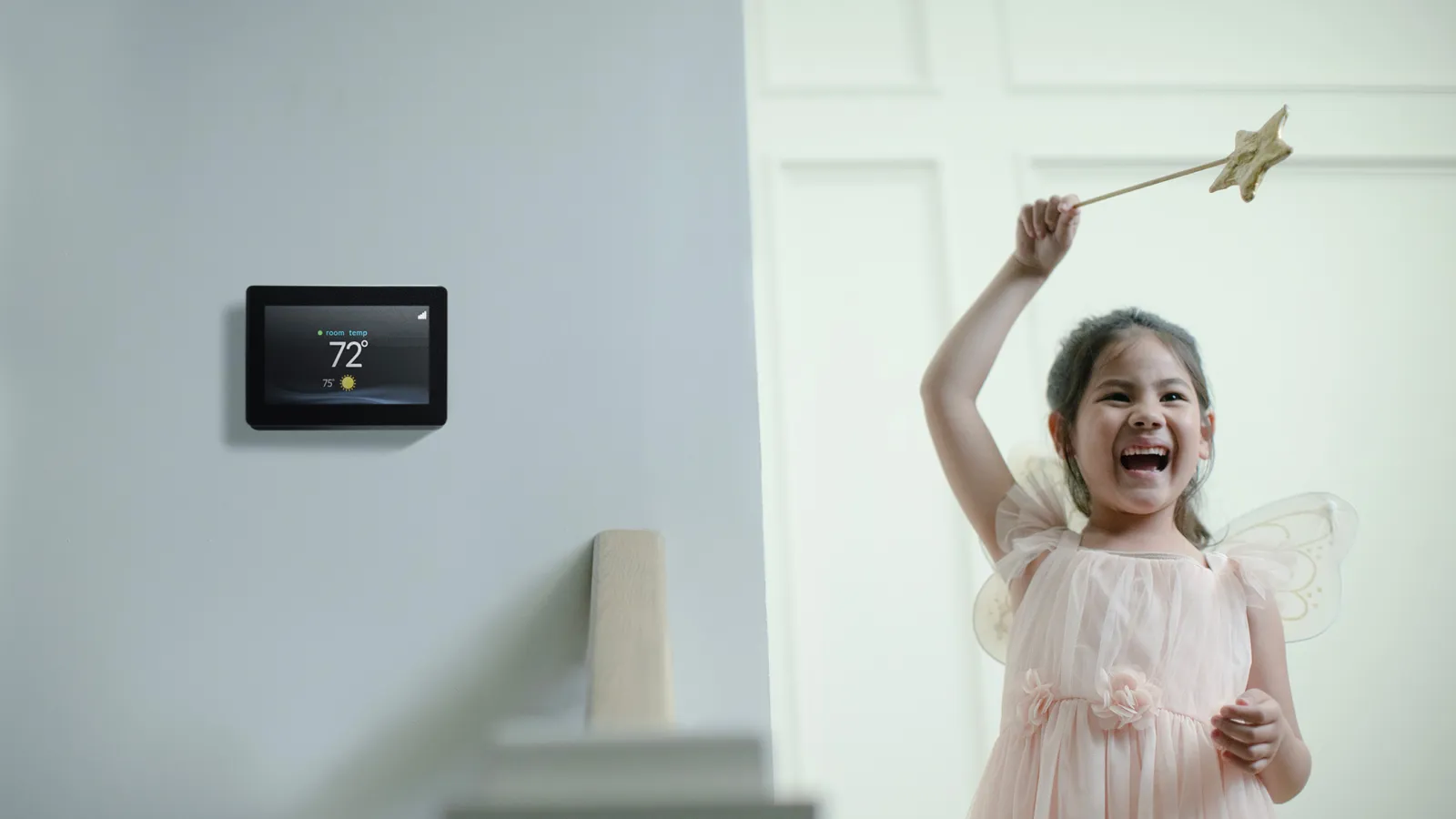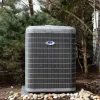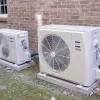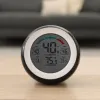As spring kicks into high gear and things heat up around Atlanta, we start getting lots of calls about “problem rooms.” These are certain rooms that just never feel comfortable, even when the rest of your house feels nice and cool.
By the time someone calls us, they’ve usually tried different things to fix the problem. Running the ceiling fan at full blast, keeping the shades closed… They might have even lowered the thermostat to where things are downright icy elsewhere in the house. But that one room just won’t cool off!
It’s an annoying problem. Thankfully, it’s one you can solve.
Most of the time, your ducts are the problem.
The size, quality, installation, and positioning of your ducts are just as important as the type and size of the air conditioner you have. After all, even a perfectly sized, the ultra-efficient air conditioner won’t keep you comfortable when your ducts are all out of whack!
When you’ve got a really hot room, there’s a good chance your ducts are poorly balanced, improperly sized, damaged or some combination of the three.
There’s always a way to address this problem, but the right fit for you will depend on several factors. To find the best solution, we always perform the same first step.
First, we perform a room-by-room Manual J load calculation with CFM testing.
We published an entire blog series on Manual J load calculations awhile back. This calculation helps us determine whether your AC is the right size for your home. It also shows us how much-conditioned air your AC should be able to deliver according to your home’s unique conditions.
About your super-hot problem room, the combination of a load calculation and CFM test ensures that we know:
- How much air each room in your house needs
- How much air those rooms are getting
- Whether your existing AC is the right capacity for your home
- Precise airflow CFM (cubic feet per minute) measurements for the problem room
If that sounds like a lot of work just to fix one room where the problem likely has to do with your ducts, know this:
Without going through these steps, we can only make guesses about the problem. It’s rarely a good idea to skip this step and just eyeball some changes to your ductwork. You could end up paying for a “fix” that doesn’t help all that much!
On top of all that, we also perform a visual inspection of your ductwork to determine whether you have duct leakage. If it looks like you’ve got a lot, we might even do a duct blaster test to see how bad the leakage is and pinpoint every spot that needs to be sealed or repaired.
So, to figure out why your room is always so hot, we always go through these motions. Only then can we start asking important, resolution-focused questions like, “How can we get [fill in the right number] additional CFM of cool, conditioned air to this really hot room?”
Possible solution #1: More return air, new vent covers, and/or dampers
After we perform the Manual J load calculation and CFM tests, this is the best possible outcome. We might only have to switch out your vent covers for something that allows a little more airflow – some kind of high-velocity cover, usually.
Another less invasive fix is adding return air to provide a proper airflow balance. This usually isn’t all that tricky. Usually, we’ll add a return or enlarge an existing one to move more air through the system.
In other cases, we can strategically install dampers in certain ducts. Some rooms might be getting more air than they need, in which case we can install a damper that reduces airflow to those rooms and redirects it to spaces that need it.
Something else that can help – and we always do this even when the solution requires serious duct modifications – is to increase the surface area of your filter. This step decreases static pressure and increases airflow to the room.
But more often than not, the best solution will be more involved than these.
Note: If you’ve got a limited budget and want to see if these modest changes make your room more comfortable, this might be your best option. The best solutions usually involve ductwork modifications, but the above adjustments can often provide some relief on their own.
Possible solution #2: Redesign your ductwork
All over Metro Atlanta, there are homes with poorly designed duct systems. Often, ductwork wasn’t actually “designed” at all. A builder or subcontractor just slapped in some ducts so that an air conditioner could send some air around the house. Little thought went into these HVAC systems, and the result is an uncomfortable home.
Most of the ducts that we’d likely need to work on will be accessible via your attic or crawlspace. Depending on what’s needed to fix your problem room, we can often keep a lot of your ductwork and redesign/reinstall sections of it to address the problem room. Usually, we’ll do this in conjunction with damper installation elsewhere inside your duct system.
But in other cases, we’ll need to remove lots of existing duct material. Many duct systems are that bad.
And yes, sometimes, we’ll have to address ducts that are behind walls or between floors. We usually don’t have to tear out the walls to access these ducts but compensating for them sometimes involves a significant expansion of air returns, installation of dampers, and reworking of air supply registers.
After redesigning the ductwork and installing new duct material, we also perform all or most of the changes mentioned in Solution #1 above more return air, new vent covers, and a filter with more surface area.
Possible Solution #3: Replace HVAC system or add a dehumidifier
Another common problem in our area is air conditioners that are too big. Any oversized AC is prone to short cycling – a process in which the target temperature is reached very quickly. When the air conditioner short cycles, it turns on and off a lot and never runs for a long enough cycle to adequately remove humidity from the home.
You’ll be sweaty and uncomfortable even though it’s 72 degrees inside.
Sometimes, this problem is more pronounced in certain rooms. If the air conditioner is simply too large, even fixing ductwork issues might not make the room quite comfortable enough. Possible solutions include:
- Replacing the HVAC system with a properly sized unit; is a good opportunity also redesign your duct system so that it fits your home’s needs and optimizes the performance of your air conditioner.
- Installing a dehumidifier; in cases where you have excess humidity in the problem room, adding a whole-house dehumidifier to the HVAC system may be your best fix.
Possible Solution #4: Beef up the envelope
We’ve written at length about your home’s envelope and how it affects indoor comfort. When you’ve got a problem room, sometimes the best solution is improved:
- Your home’s thermal barrier, which usually means adding or replacing insulation
- Your home’s air barrier, which usually means sealing air leaks with foam and/or caulk
A lot of times, your ductwork and HVAC machinery are fine or mostly fine. The problem is that your home is poorly insulated and/or has a lot of air infiltration from the outdoors.
Most air infiltration, contrary to what many people think, actually occurs at the top and bottom of your living space. The plumbing, electrical, and HVAC penetrations in floors and ceilings are often surrounded by large gaps. It’s through those gaps that large amounts of attic and crawlspace air enter your home. Similarly, the most significant insulation deficiencies are usually in attics and crawlspaces.
By improving a home’s envelope, we can sometimes make problem rooms more comfortable – even when we don’t redesign and rework the ducts.
Got a really hot room? We can help.
At PV Heating, Cooling & Plumbing, we always work with you to find the right solution for your needs and budget. Even when your budget doesn’t allow for the best possible fix, we can usually “meet in the middle,” so to speak, and improve the situation until you’re ready to make bigger changes.
If you live in Metro Atlanta and need to fix a room that’s too hot, get in touch today! We’ll set up an appointment to discuss the problem and inspect your home.






